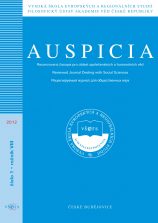Analýza velikosti střední třídy a příjmů v Latinské Americe
Analysis of Middle Class Size and Income in Latin America
Author(s): Lourdes Daza Aramayo, Marek VokounSubject(s): Economic history, Economic development, Transformation Period (1990 - 2010), Present Times (2010 - today), Socio-Economic Research
Published by: Vysoká škola evropských a regionálních studií, z. ú.
Keywords: middle class; Latin America; inequality; economic development;
Summary/Abstract: In the last two decades of the 20th century in Latin America there was a historical and exceptional growth of the middle class which has doubled in size since 2001. According to the latest data, every third inhabitant is considered a middle class member now. This concerns nearly 200 million people in Latin America. Due to the boom of economy many people have escaped from poverty in order to get into the middle class regardless of their political views. This study focuses on identifying the variables that are related to Latin American middle class size. The data sample contains 17 countries dating back to 2014. The regression tested non-linear effects of selected factors. The aggregate tax rate on corporation profits has a negative impact on the middle class size (measured by income share), the share of the added value of the agrarian sector has a positive effect, but only up to 11.4% of GDP, the share of agricultural land on the total land of the country has a negative impact, but only up to 78 %. The share of foreign direct investment in GDP has turned out to be negative, and this result suggests that Latin American foreign direct investment has begun to serve as the source of wealth for the richest 20% of the population.
Journal: Auspicia
- Issue Year: 2017
- Issue No: 1
- Page Range: 139-149
- Page Count: 11
- Language: Czech

